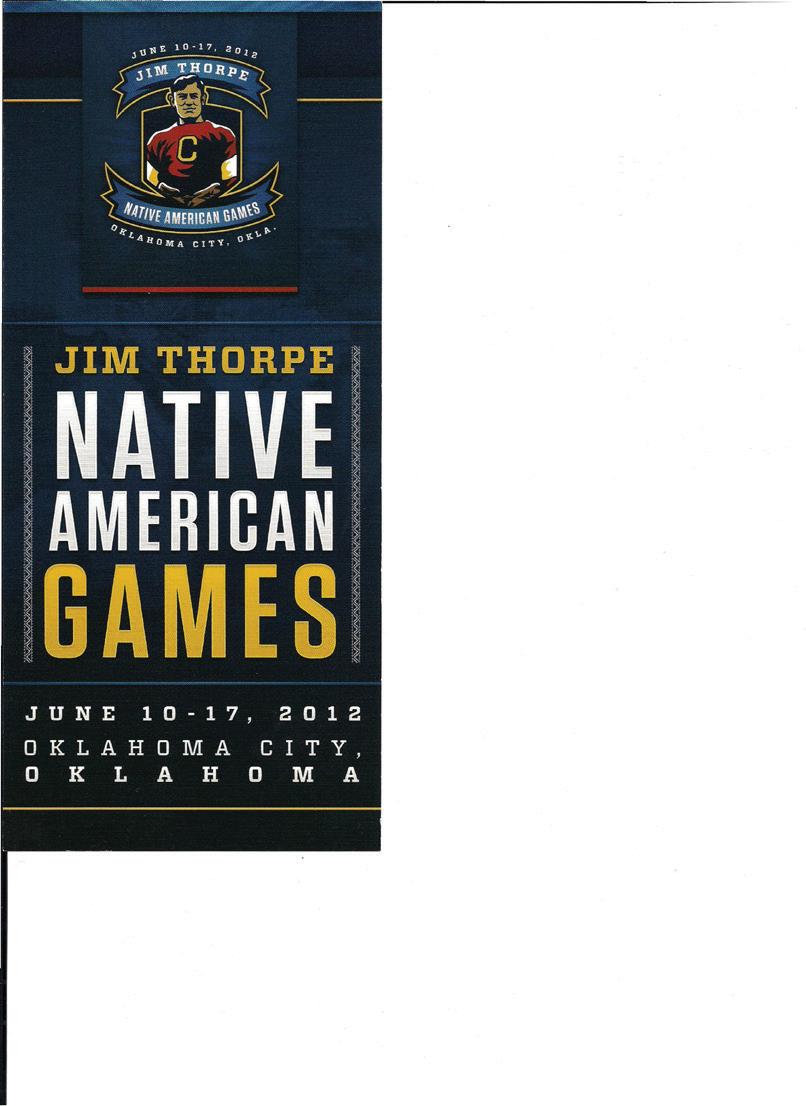
10 minute read
Honoring a Legacy
from 2012 Yearbook
Honoring a Legacy: Jim Thorpe Games Will Celebrate the 100-Year Anniversary of Athlete's Olympic Triumph
By Eli Gieryna Few athletes have impacted sports history like Jim Thorpe. Born in Oklahoma, his versatility was unmatched as he won multiple Olympic medals and also played professional baseball, football and basketball.
Thorpe’s legacy will be honored from June 10-17 in Oklahoma City, which will play host to the Jim Thorpe Native American Games. The event will coincide with the 100th anniversary of Thorpe’s performance at the 1912 Olympic Games in Stockholm, Sweden.
The Games will feature athletic competitions in 11 traditional sports – including tennis – as well as exhibitions in other games, such as stickball, blowgun and hatchet-throwing. More than 3,000 Native American athletes representing Indian nations, bands and tribes from across the United States are expected to participate.
The tennis tournament will offer a range of divisions, including men’s and women’s open singles and doubles, in addition to mixed doubles. It will also have age brackets for juniors and adults alike. Players will travel from around the country to play in the event.
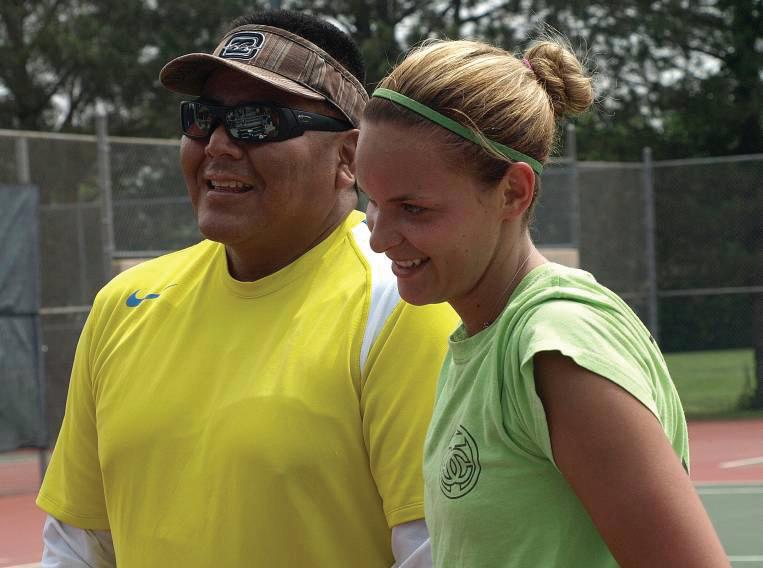
Above and lower left: Athletes compete at the previous NAITA games. The Jim Thorpe games will take the place of the NAITA games this year.
The Jim Thorpe Games tennis tournament will take the place of the North American Indian Tennis Association (NAITA) Championships, which are held annually each Memorial Day weekend. The event has frequently been held in the Missouri Valley section and will return to it in 2013, in Tulsa, Oklahoma.
This year, however, the tennis tournament will be a part of a larger focus – honoring Thorpe’s historic contributions to the sporting world. And in that spirit, the Games will aim to build those positive aspects in its competitors, especially younger ones.
“The Native American communities know the importance and value of supporting healthy lifestyle choices for their youth. Some of the many benefits of the Games will include promoting leadership development, increasing cultural awareness and most importantly, motivating young people to achieve great things,” said Annetta Abbott, Executive Director of the Jim Thorpe Games.
WILLIAMS HOPES TO MAKE MARK AT JIM THORPE GAMES
The Jim Thorpe Games will feature elite athletes from around the United States, and the tennis event will be no different. One of the names to watch will also be one of the youngest competitors in the field: 15-year-old Austin Williams, who lives in Wichita, Kansas, and trains in Kansas City, Missouri.
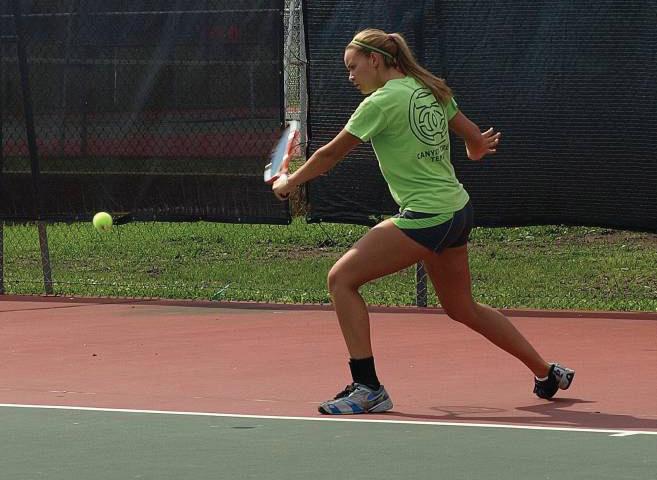
Williams is of Cherokee heritage and will participate in the Games for the first time.
The high school sophomore has made an impact in the USTA Missouri Valley junior circuit, ranking as high as No. 6 in the Boys 16s division of the Missouri Valley section. He also ranks in the top 250 nationally in that same division.
Proceeds from the Games will benefit the Jim Thorpe Bright Path Youth Programs that include Jim Thorpe All-Star Games, Children’s Challenge, Artfest and the statewide Red Ribbon Week. In addition, a portion of the proceeds will benefit the “Awakening the Spirit” Native American Diabetes Awareness and Prevention program of the American Diabetes Association.

Williams maintains aspirations of playing tennis in college and is currently interested in such high-profile schools as Michigan, Pepperdine, Florida, Texas and Tennessee.
Got USTA Missouri Valley Gear?
Powerful Promotional Products
Preferred and Licensed Vendor of the USTA Missouri Valley

www.sunflowermarketing.com
MEMBER
Dean Hiegert
1-800-337-1097 ext 352 dhiegert@mcind.com
Thank you gifts * Volunteer t-shirts Board Apparel * Winning Promotions
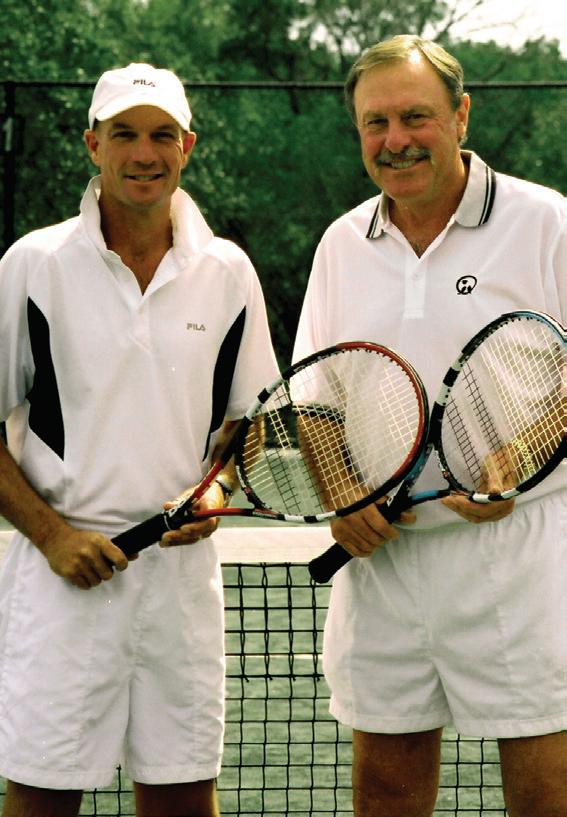
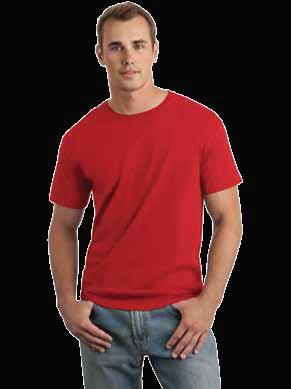
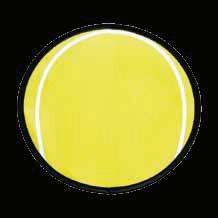

MISSOURI VALLEY
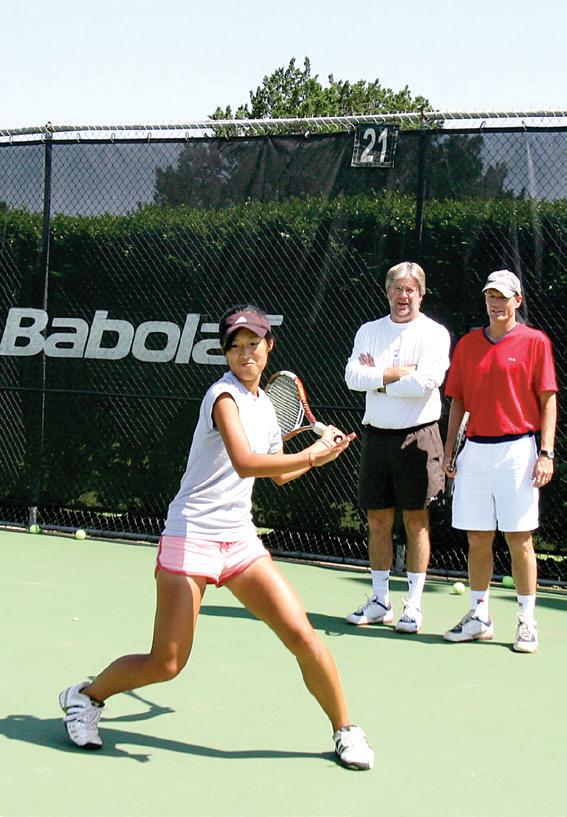

Anthony PerKins On Court With ...

Anthony Perkins is quite familiar with the 10 and Under Tennis movement here in the United States. As a child, Perkins grew up learning tennis in a similar system in the United Kingdom – known there as “Short Tennis” – and is now working to help young kids here develop their games. As the Director of Junior Tennis at Midtown Athletic Club in Overland Park, Kansas, Perkins is implementing programs that fully embrace 10 and Under Tennis. He spoke with the USTA Missouri Valley about his approach and how learning tennis in a modified format made him a better player.
CrossCourt: Tell us a little bit about your tennis background and how you got involved in the game.
Anthony Perkins: I started playing tennis around age four in the United Kingdom because my whole family plays. I started out playing a few tournaments at under-10 and then, by under-12s, I was part of the Junior National Team. At age 16, I moved to a Tennis Center of Excellence in London to train full-time and go to school. When I graduated high school I traveled all over the world, playing lower satellites and playing professional club tennis in Germany. I wasn’t doing so well on the tour, so I decided to come to the United States and took a scholarship at Drake University in Iowa. I played for four years at Drake and then took over as the coach there for a season before working as the Junior Director at Aspen Athletic Club for about five years. In 2009, I decided to move to Kansas City and took the role of Director of Junior Tennis at Midtown Athletic Club in Overland Park, Kansas.
You grew up in England and learned to play tennis with a method similar to 10 and Under Tennis here in the U.S. How did that shape your development as a player?
Back in the late 1980s it was called “Short Tennis,” and my mother actually used to teach classes in a church hall, so I went along and played with them. We had state and national championships with it on a 42-foot court using a foam ball. I went to the national championships and was lucky enough to be selected to do a demonstration at Wimbledon in 1988 with the red ball. [Learning this way] helped for a couple of reasons. First, I could play games, which meant it was more fun so I kept going back. More importantly, it helped me become a better tactical player since I was able to work more on playing out points as opposed to technique.
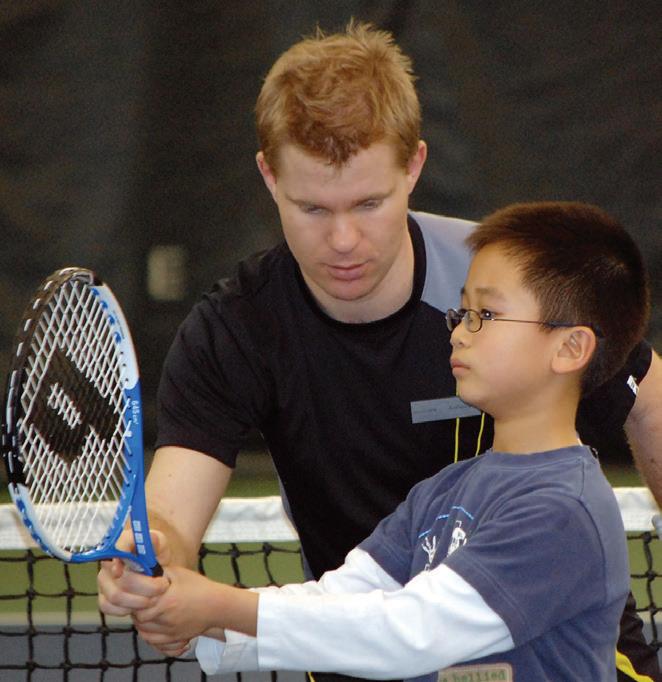
How did you get involved in teaching tennis?
When I was playing at Drake, the men’s coach there had us help out with lessons and camps, and when he left I took over for him. I chose to go into teaching as opposed to collegiate coaching after coaching 16s Zonals. I found that you get to make more of a difference with kids when you start them young as opposed to coaching 20-year-olds in college.
Why do you think that using a modified play format like 10 and Under Tennis is important for the development of young players?
Because it’s fun! It allows us to play more with the kids and it allows the kids an environment in which they can learn for themselves, as opposed to us simply telling them what to do. It’s like a science experiment; you never really know what’s going to happen. It allows for us teaching professionals to really get involved with each student individually. And it makes players so much more tactically aware as they find out what their strengths and weaknesses are by playing. We see kids come in and play tennis on their first day. That never happened before.
What types of events and tournaments do you host at your club for 10 and Under Tennis players, and what has the response been from the players and parents?
We run an in-house Grand Slam circuit (US Open, Australian Open, French Open, Wimbledon) for each level – red, orange, green – which has proven very popular with the kids and parents. Also, we recently had a parent-child orange court tournament where parents had to use 25-inch racquets and play on the smaller court with their kids. At Midtown, we have permanent lines on all of our courts, which allows us to go back and forth easily. We hosted two sanctioned 10 and Under Tennis tournaments last year, and will host a 10 and Under Tennis individual championship for the Missouri Valley in June, along
What advice would you have for other teaching pros who may be hesitant to use 10 and Under Tennis and break from the more traditional methods of instructions?
First of all, just put lines down on all your courts. That way you don’t have any excuses. And second, don’t interfere with the players as much as you think you should; allow them to find out things for themselves. They are much more likely to retain information if they think that they figured it out for themselves. Create a positive, fun learning environment and don’t be afraid to be a kid yourself. And finally, use the same equipment that the kids are supposed to use because they will be more likely to use the correct equipment if we show that we can use it, too.

What do you like to do when you’re not playing tennis?
I watch a lot of soccer from England, hang out with my wife, Emily, and my dog, Oliver. - Compiled By Eli Gieryna
Join the celebration! Host or attend a youth tennis event and be a part of the USTA's largest youth tennis recruitment effort!

Join the celebration! Host a turnkey Youth Registration event this March and be a part of the USTA's largest youth tennis recruitment effort - and grow your business. Sign up kids for Spring and Summer tennis programs and show parents how the game has been sized right for kids.

Play Days are events designed to introduce kids to competition in a lowpressure setting where results are not documented. These events provide kids with the opportunity to continue to develop and enhance their skills. From beginners to more experienced players, a Play Day is a welcoming way for kids to experience the social and competitive aspects of tennis.
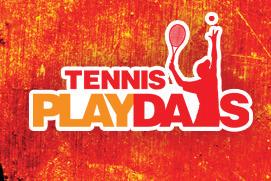
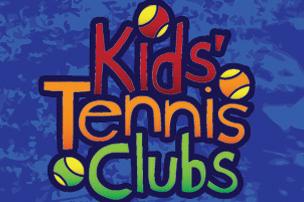
A Kids’ Tennis Club is a great way for kids to be introduced to tennis in a safe, open-play setting at local schools, parks, youth centers and tennis facilities. These clubs offer kids the opportunity to have fun, gain confidence and meet new friends, while enhancing their social and physical development.








